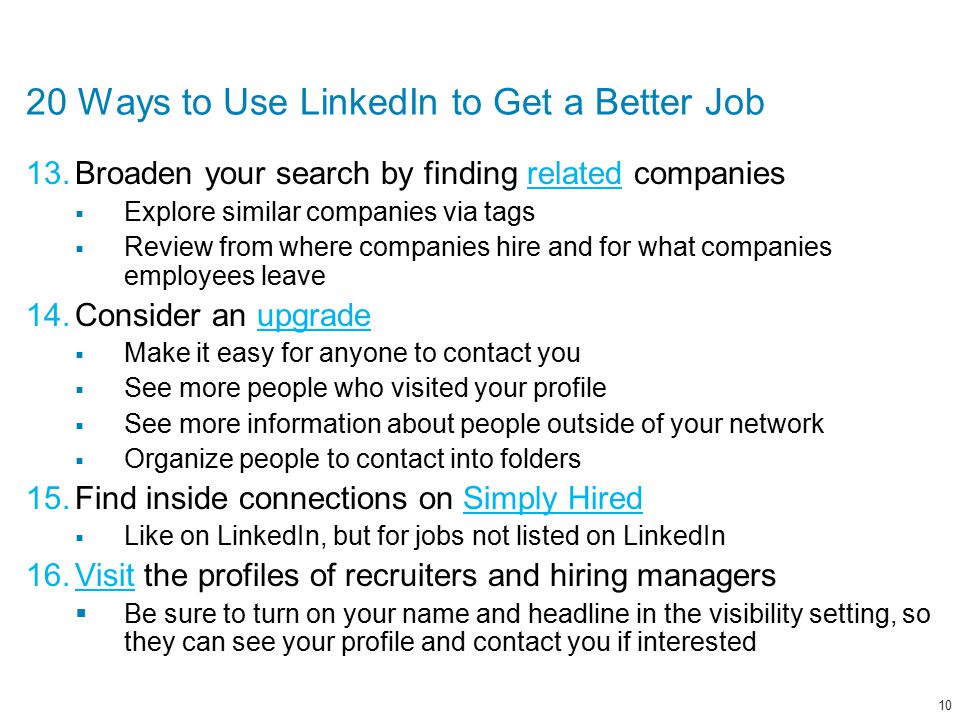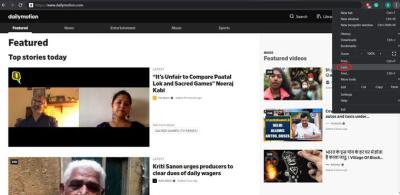When it comes to landing your dream job, you may find yourself at a crossroads: should you apply through LinkedIn or go straight to the company’s website? While both approaches have their merits, applying directly to a company often holds the edge. In this post, we'll dive into why the direct application method is often more effective and what you need to know about navigating the application process.
Understanding the Application Process

To understand why applying directly to a company can be more beneficial, let's peel back the layers of the application process itself. Here’s an overview of how things typically work:
- Job Posting: Companies list available positions on their career pages and, often, on job boards like LinkedIn.
- Application Submission: Candidates submit their resumes, cover letters, and sometimes additional materials, like portfolios.
- Initial Screening: HR or a recruitment coordinator screens applicants to weed out those who don’t meet minimum qualifications.
- Interviews: Short-listed candidates are invited for interviews, which may be conducted in rounds.
- Final Decision: The hiring team evaluates candidates and decides who to offer the job to.
Now, let’s explore why applying directly can enhance your chances:
1. Tailored Communication
When you apply directly, you often have the opportunity to tailor your application materials more effectively. You can adjust your resume and cover letter to align closely with the company’s mission and the specific role. This personalized touch can genuinely impress hiring managers. On LinkedIn, while you can still customize your resume, the format and presentation are often limited due to the platform's constraints.
2. Enhanced Visibility
Applying directly means your application goes straight to the hiring team or HR. This can increase your visibility compared to an application submitted through LinkedIn, where thousands of others are vying for attention. Remember, companies often receive countless applications from job boards, so being among the first through the door can make a difference.
3. Less Competition
Many job seekers flock to popular platforms like LinkedIn to apply for positions. This creates a crowded applicant pool, making competition fiercer. By applying directly, you may find yourself up against fewer candidates, which can considerably boost your chances of landing an interview.
4. Direct Connection
Some companies offer the option to connect directly with hiring managers when you apply through their website. This isn’t typically an option on job boards like LinkedIn. Building a rapport or even directly reaching out via email can put you on the radar of decision-makers, which is invaluable in a competitive job market.
5. Better Insight into Company Culture
When you apply directly through a company’s career page, you often gain better insights into the company culture and values. Many company websites showcase their work environment through videos, employee testimonials, and detailed descriptions of their missions. This information can help you align your application and prepare for interviews more effectively.
In conclusion, while both methods of application have their pros and cons, applying directly to a company often provides greater benefits, including personalized communication and improved visibility among hiring teams. The next time you see an opening, consider taking the direct route—it could lead you to your next career opportunity!
Also Read This: How to Log Out of LinkedIn: A Quick Guide to Managing Your Account
3. Benefits of Applying Through LinkedIn
When it comes to applying for jobs, LinkedIn is a powerful tool that can significantly enhance your job search experience. Let’s explore the benefits of applying through LinkedIn and why it might be the right choice for you.
Networking Opportunities: One of the biggest advantages of LinkedIn is its networking potential. When you apply for a position, you can see if you have any connections at the company. This opens doors for informational interviews or referrals, which can increase your chances of landing the job. A recommendation from someone within the organization can go a long way!
User-Friendly Interface: The application process on LinkedIn is usually quite streamlined. With the “Easy Apply” feature, you can submit your application with just a few clicks. You often won’t need to fill out multiple forms or upload extensive documentation, which saves time and effort.
Real-Time Updates: LinkedIn allows you to stay informed about the status of your application. Employers often post about new job openings or updates directly on their LinkedIn pages. This means you’ll always be in the loop about the latest opportunities and company news.
Enhanced Visibility: Your LinkedIn profile is essentially your online resume. By applying through LinkedIn, you can showcase your skills, experience, and endorsements to potential employers. Recruiters often browse profiles to find candidates, meaning that a well-optimized LinkedIn profile can enhance your visibility and attract attention.
Search and Filter Options: Searching for jobs on LinkedIn is incredibly efficient. You can use various filters to narrow down your search based on location, industry, job title, and even company size. This advantage makes it easier to find roles that closely align with your career aspirations.
Access to Insights: LinkedIn provides invaluable insights into companies you might be interested in. You can view information about company culture, employee reviews, and salary benchmarks. Discovering more about a company before applying helps you tailor your application and prepare for interviews effectively.
All these benefits make LinkedIn not just a job board but a comprehensive career networking platform. With its strengths in facilitating connections and enhancing the application process, applying through LinkedIn is a smart move for many job seekers.
Also Read This: Is LinkedIn Down Today: How to Check LinkedIn’s Status
4. Advantages of Direct Applications to Companies
Applying directly to a company can be an effective strategy, too. While LinkedIn offers its perks, there are distinct advantages to submitting your application straight to the employer.
Direct Connection to Hiring Managers: When you apply directly, your application is often routed straight to the hiring manager or the HR team. This can result in a more personal touch and might even lead to quicker feedback on your application status.
Company Culture Insight: By researching the company’s website and applying directly, you’ll get a feel for their culture and values. Many companies provide detailed information about their mission, vision, and what they’re looking for in candidates. This knowledge allows you to tailor your resume and cover letter accordingly, which can be a crucial differentiator in a competitive job market.
Potential for Other Opportunities: When you apply directly, there’s a chance you might be considered for other roles that you hadn’t initially applied for. Companies often appreciate candidates who show genuine interest in their organization and may keep your application on file for future openings that better match your skills.
Less Competition: Direct applications might face less competition compared to roles posted on job boards. Many job seekers flock to platforms like LinkedIn, which means applying directly can put you ahead of the game. Fewer applicants could mean a higher likelihood of getting noticed.
Engagement with Company Updates: If you’re applying directly, you’re likely to be more engaged with the company’s news and updates. By visiting their website regularly, you’ll stay informed about new initiatives, projects, and leadership changes, which are all valuable when preparing for an interview.
Control Over Your Application Process: Submitting a direct application gives you the chance to personally craft your resume and cover letter without being limited by third-party platforms. This means you have full control over how you present yourself to the employer.
In summary, while LinkedIn provides a fantastic networking site for job seekers, direct applications allow you to create a more personal interaction with potential employers. Each method has its merits, and knowing when to use each one can greatly enhance your job search strategy.
Also Read This: How to Add a Video to Your LinkedIn Post to Boost Engagement
5. Factors to Consider When Choosing an Application Method
When deciding whether to apply through LinkedIn or directly to a company, there are several factors to consider. Each method has its advantages and disadvantages, and understanding these can help you make the best choice for your job search. Here are some key elements to think about:
- Job Type: The type of position you're targeting can influence your decision. For more creative or tech roles, a LinkedIn application might showcase your portfolio better than a traditional application.
- Company Size: Larger companies may have structured application processes in place, making direct applications easier to navigate. Smaller companies, however, often rely on referrals, which LinkedIn can facilitate.
- Job Posting Visibility: Sometimes, roles on LinkedIn are more visible and may attract a larger pool of candidates. Consider if you’ll stand out in that crowd or if a direct application—especially to less publicized openings—might yield better results.
- Networking Opportunities: Applying through LinkedIn can allow you to leverage your connections. If you know someone at the company, ask them to refer you. A personal touch can make your application stand out.
- Application Tracking: Companies that use Applicant Tracking Systems (ATS) may process direct applications more efficiently. Understanding their system can guide you on whether to apply directly or through LinkedIn, where your profile may be scanned differently.
Additionally, consider your own strengths and preferences. If you're more comfortable tapping into your network, LinkedIn might be a great starting point. However, if you prefer a straightforward application process without networking dynamics, applying directly might be the better choice.
Also Read This: Are LinkedIn Recruiters Legit? How to Spot Genuine Opportunities
6. Success Stories: LinkedIn vs. Direct Applications
Success stories from job seekers provide real-world insight into which application method may work best in different situations. Here are some personal anecdotes that highlight the differences between applying through LinkedIn and directly to a company:
| Method | Success Story |
|---|---|
| Sarah was looking for a marketing position and had been struggling for months. After optimizing her LinkedIn profile and reaching out to connections in the marketing industry, she applied for a role through LinkedIn. Thanks to a referral from a former colleague who worked at the company, she landed an interview and eventually got the job! | |
| Direct Application | Mike had his sights set on a tech company he admired. He noticed an opening on their career page that hadn't yet appeared on LinkedIn. After tailoring his resume and crafting a compelling cover letter, he submitted a direct application. Within a week, he received an interview invitation, demonstrating that sometimes going directly to the source pays off. |
| Emma attended an online networking event hosted on LinkedIn, connecting with employees from her dream company. After several conversations, she applied for a position through LinkedIn, mentioning her discussions during her application. This personalized touch helped her secure an interview. | |
| Direct Application | Tom found a job listing that hadn’t been advertised widely. After doing thorough research about the company and highlighting that in his application, he submitted directly through their website and was rewarded with a quick response to schedule an interview. |
These stories illustrate that both methods can lead to success, depending on the circumstances. Ultimately, it’s about leveraging what works best for you and the opportunities available. Whether you choose to apply through LinkedIn or directly, make sure to showcase your strengths and align them with the job you desire!
Also Read This: How to Change Banner on LinkedIn – A Quick Guide to Customizing Your Profile Banner
7. Best Practices for Both Application Methods
When it comes to applying for jobs, whether through LinkedIn or directly to a company, there are some best practices that can enhance your chances of landing that dream position. Here are some tips that can help you make the most out of both application methods:
Optimize Your LinkedIn Profile
Your LinkedIn profile acts as an online resume and should be treated as such. Here’s how to optimize it:
- Professional Photo: Use a clear headshot that reflects your professional demeanor.
- Compelling Headline: Create a headline that sums up your skills and aspirations, not just your job title.
- Detailed Summary: Write a summary that tells your story, showcasing your skills, experiences, and what you bring to the table.
- Skills and Endorsements: Ensure that relevant skills are prominently displayed, and seek endorsements from colleagues.
Tailor Your Applications
Whether applying directly or through LinkedIn, generic applications seldom make a strong impression. Always tailor:
- Customize Your Resume: Modify your resume to align your skills with those listed in the job description.
- Personalized Cover Letter: Write a cover letter that speaks directly to the hiring manager and showcases your passion for the role.
Networking
Networking can be a game changer in your job search:
- Connect with Employees: If you apply through LinkedIn, try to connect with current employees at the company.
- Informational Interviews: Request informational interviews to learn more about the company culture and the role.
Follow Up
After applying, don’t hesitate to follow up. If you applied through LinkedIn, consider sending a polite message to the recruiter to reiterate your interest in the position. When applying directly:
- Email the Hiring Manager: A courteous follow-up email a week or two post-application can keep you on their radar.
Stay Organized
Keep track of where you’ve applied and any interactions you've had. Consider using a spreadsheet to track:
- Company Name
- Application Date
- Status (Submitted, Interview, etc.)
- Follow-Up Date
8. Conclusion
In the end, whether you choose to apply through LinkedIn or directly to a company, both methods have their unique advantages. LinkedIn offers the power of networking and visibility, while direct applications often provide a more straightforward connection to hiring managers. The best approach might involve a combination of both methods to maximize your reach and visibility.
Remember, the job search process can be daunting, but you have the tools at your disposal to navigate it effectively. By implementing the best practices we discussed, tailoring your applications, and leveraging your network, you can significantly enhance your chances of standing out in a competitive job market.
So, don’t just limit yourself to one approach—explore both avenues! Keep your spirits high, remain persistent in your efforts, and soon enough, you’ll find yourself stepping into that new role you’ve been dreaming of. Good luck!
 admin
admin








